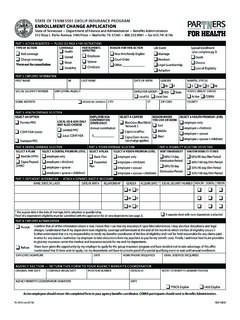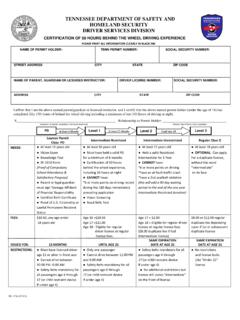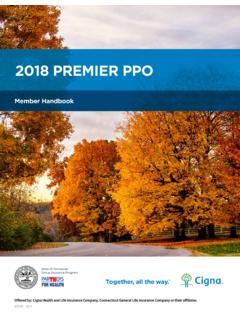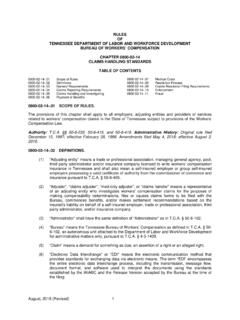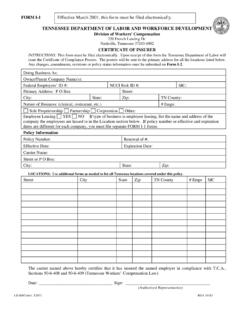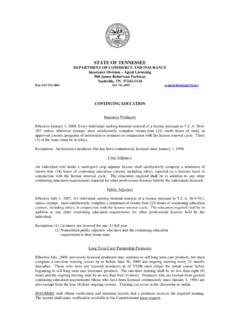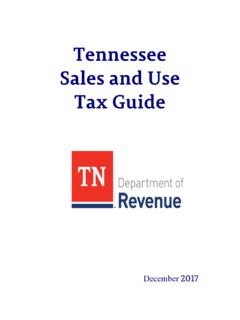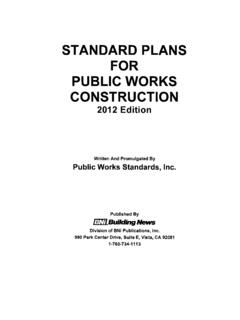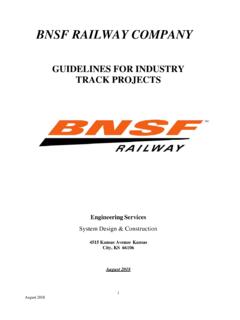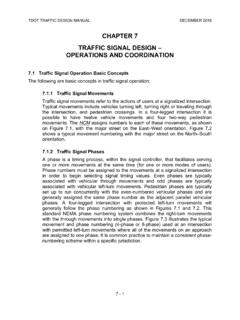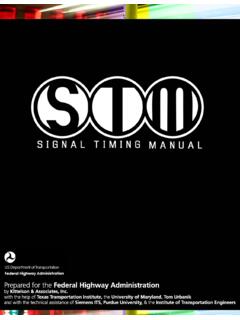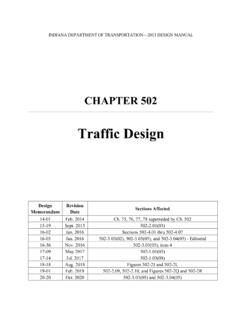Transcription of CHAPTER 9 TRAFFIC SIGNAL DESIGN – SUPPORTS AND …
1 TDOT TRAFFIC DESIGN MANUAL DECEMBER 2016 9 - 1 CHAPTER 9 TRAFFIC SIGNAL DESIGN SUPPORTS AND SIGNAL HEADS TRAFFIC SIGNAL SUPPORTS The two basic types of TRAFFIC SIGNAL SUPPORTS are strain poles and mast arm poles. TRAFFIC SIGNAL SUPPORTS shall be in accordance with current TDOT standards and specifications and the AASHTO Standard Specifications for Structural SUPPORTS for Highway Signs, Luminaires, and TRAFFIC Signals. In addition, TRAFFIC SIGNAL SUPPORTS shall be in accordance with the NEC and the NESC.
2 Adjacent utility poles shall not be used for TRAFFIC SIGNAL SUPPORTS in new installations, unless physical conditions preclude the installation of separate TRAFFIC SIGNAL SUPPORTS . In these cases, it is important to coordinate the TRAFFIC SIGNAL DESIGN and installation with the affected utility company. All TRAFFIC SIGNAL projects on a state route or that are being designed with TDOT s involvement ( in-house DESIGN , consultant DESIGN , local programs projects being let by TDOT, etc.), shall be analyzed with TDOT s Intersection Pole Designer Software.
3 This software is free and shall be obtained through the TDOT TRAFFIC Operations Division, TRAFFIC Engineering Office..1 TRAFFIC SIGNAL Strain Poles A TRAFFIC SIGNAL strain pole is a pole (wood, steel, or concrete) to which span wire is attached for the purpose of supporting the SIGNAL wiring and SIGNAL faces (See TDOT Standard Drawings T-SG-1, T-SG-4, and T-SG-8). Wood poles should only be used for temporary TRAFFIC SIGNAL installations. Steel or concrete strain poles should be considered when span lengths exceed 90 feet or easements/right-of-way will be required for guy wires.
4 TRAFFIC SIGNAL strain poles should also be considered when a box span arrangement is used to provide additional strength. Span Length: Strain poles should be located so as to limit the distance between the stop line and the SIGNAL heads to a maximum of 180 feet. The minimum breaking strength for span wires shall be noted in the plans. Each span wire shall be grounded. Minimum Cable Breaking Strength: The minimum cable breaking strength may be reduced to times the maximum tension force listed on TDOT s Intersection Pole Designer Software output, provided either Group II or Group III load combination governed the span wire DESIGN .
5 This change in DESIGN philosophy is in conformance with Article of the AASHTO Standard Specifications for Structural SUPPORTS for Highway Signs, Luminaries, and TRAFFIC Signals. Currently TDOT s Intersection Pole Designer Software internally uses a minimum safety factor of 3 to calculate the minimum cable breaking strength. Therefore, the designer will have to manually calculate the minimum cable breaking strength until TDOT s Pole Designer Software can be updated. This change will reduce TDOT TRAFFIC DESIGN MANUAL DECEMBER 2016 9 - 2 the diameter and grade of the ASTM A475 span wire required to meet the minimum cable breaking strength.
6 Strain Pole Height Determination: The height of a strain pole is determined by Equation . When providing a pole height on SIGNAL plans, it is important to specify that the top of the pole foundation should usually be at the same elevation as the roadway crown. In cut areas, fill may be required to prevent the foundation from protruding out of the ground. An exception is on high-fill roadway sections where the pole must be located outside of the fill area. Consideration must be made to ensure an adequate pole length is specified in such a situation.
7 PH = 2 + LsS + c + H + d Equation Pole Height Where: PH = Pole Height (feet) Ls = Maximum Span Length (feet) S = DESIGN Sag (usually 5%) c = Clearance above Road ( feet typical) H = Height of SIGNAL Head with Backplate (usually feet) d = Side -slope Drop -o ff (feet from crown of road) Where two span wires attach to the same strain pole, the pole height will be determined by using the longer of the two span wires. Pole heights shall be rounded up where necessary to be specified in even number feet ( 26, 28, 30, etc.). Strain Pole Location: Generally, strain poles should be located outside of the clear zone, inside the right-of-way.
8 SIGNAL Location: Strain poles should be located so that SIGNAL faces hung on their span wire are located between 40 to 180 feet from the approach stop line. Minimum Horizontal Clearances: On curbed roadways, poles shall be located no closer than two feet to the front of curb. In all cases, TRAFFIC SIGNAL poles should be located as far as practical from the edge of the travel lane without adversely affecting SIGNAL visibility. Pedestrian Considerations: When installing a pedestrian pushbutton, poles should be located adjacent to the sidewalk within reach of pedestrians in accordance with the MUTCD.
9 Luminaires: Where street lights are installed on TRAFFIC SIGNAL poles, their DESIGN shall be integrated with the pole and they shall be mounted at a minimum height of 30 feet above the roadway. Actual mounting height shall be determined by the luminaire photometrics. TDOT TRAFFIC DESIGN MANUAL DECEMBER 2016 9 - 3 Tether Wires: Tether wires shall be installed on all span wire assemblies to minimize TRAFFIC SIGNAL face movement due to wind effects. Tether wires must be able to breakaway from poles when hit or snagged. Span Wire Layouts: Span wire layouts in general allow for further pole placement from the roadway than do mast arm installations.
10 In addition, they eliminate the need for boring under the roadway by allowing SIGNAL and detector cables to be run overhead on the SIGNAL span wire. If possible, diagonal span wire layouts should always be avoided. Typical strain pole span wire layouts are shown in Figure . The following are the most common span wire arrangements: Box Span Arrangement: This SIGNAL arrangement is the most common and places strain poles on each of the four corners of the intersection. Advantages: o Allows good alignment of SIGNAL heads; o Provides the required minimum 40-foot distance between the SIGNAL heads and stop line on all approaches; o Provides shorter span wire lengths and sag than diagonal spans; o Provides locations for pedestrian signals.
